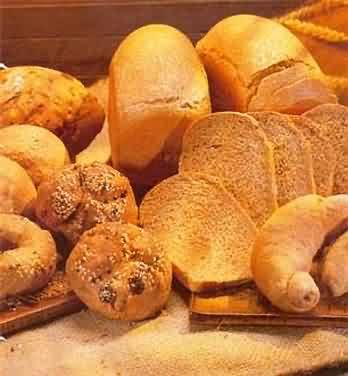So when should you start to give your baby whole-wheat foods that are good for your body? After two years of age, the teeth are almost as long, and the development of gastrointestinal function is basically complete. It is time to add whole-grain foods to the baby's diet to increase their intake of cellulose.
"Eat whole wheat is healthier." However, not all people are suitable for eating. Nutrition experts point out that whole-grain foods and coarse grains are not conducive to children's nutrient absorption and therefore should eat less.

Whole wheat foods also need to be eaten healthy
Although the white bread is much more lost in the processing of cellulose, minerals and vitamins, it contains protein, starch and fat, which can provide energy for the child's growth and development. Most whole-wheat breads and coarse grains, which are most popular among parents, will interfere with the absorption of minerals and trace elements due to higher fiber content. Therefore, the intake of whole grains and coarse grains should not be excessive, and it should not exceed one quarter of the total amount of staple foods.
In order to ensure the intake of minerals and trace elements, in addition to limiting coarse grains, it is necessary to eat more fruits and vegetables. However, Qi Kemin also pointed out that parents have misunderstandings on eating vegetables. For example, children do not like to eat some vegetables, but parents have chosen to force him to eat. In fact, the vitamins and minerals in vegetables can also be obtained from other foods. For example, if children do not like to eat carrots, vitamin A and carotene can be obtained from the egg yolk and liver of animals; if they do not eat potatoes, they can take potassium from bananas. . Of course, this is not to give children a reason not to eat vegetables. From the point of view of a balanced diet, the food is still eaten, but at some point, parents can also change it and replace the child's nutrition with a replacement method.
2-year-old baby can contact whole wheat food
The digestive system of infants and young children is not yet fully developed: less saliva secretion, less teeth, poor chewing ability; stomach capacity is small, stomach muscles are not developed; the intestinal wall is thin and has good permeability. The content of cellulose in whole wheat is high, and it has certain stimulation to the baby's stomach after eating.
Contact with whole wheat, starting at the age of 2
Although whole-grain foods have various benefits, for 0-2 year-old infants, whole-grain foods are just a hindrance to their access to other “food†and affect their healthy growth. So when should you start to give your baby whole-wheat foods that are good for your body?
After two years of age, the teeth are almost as long, and the development of gastrointestinal function is basically complete. It is time to add whole-grain foods to the baby's diet to increase their intake of cellulose. However, it should be noted that it is not advisable to start eating more than 30 grams a day, and it is best to eat them separately. Because the intake of too much fiber has a negative effect, such as inhibiting eating, impeding the absorption of calcium, zinc, iron and so on. Cellulose can also increase the volume of feces, so that the frequency of defecation can be accelerated. In general, infants and young children are not recommended to eat more.
YT-H706
YT-H706
Shenzhen Sunshine Technology Co.,Ltd , https://www.szyatwin.com